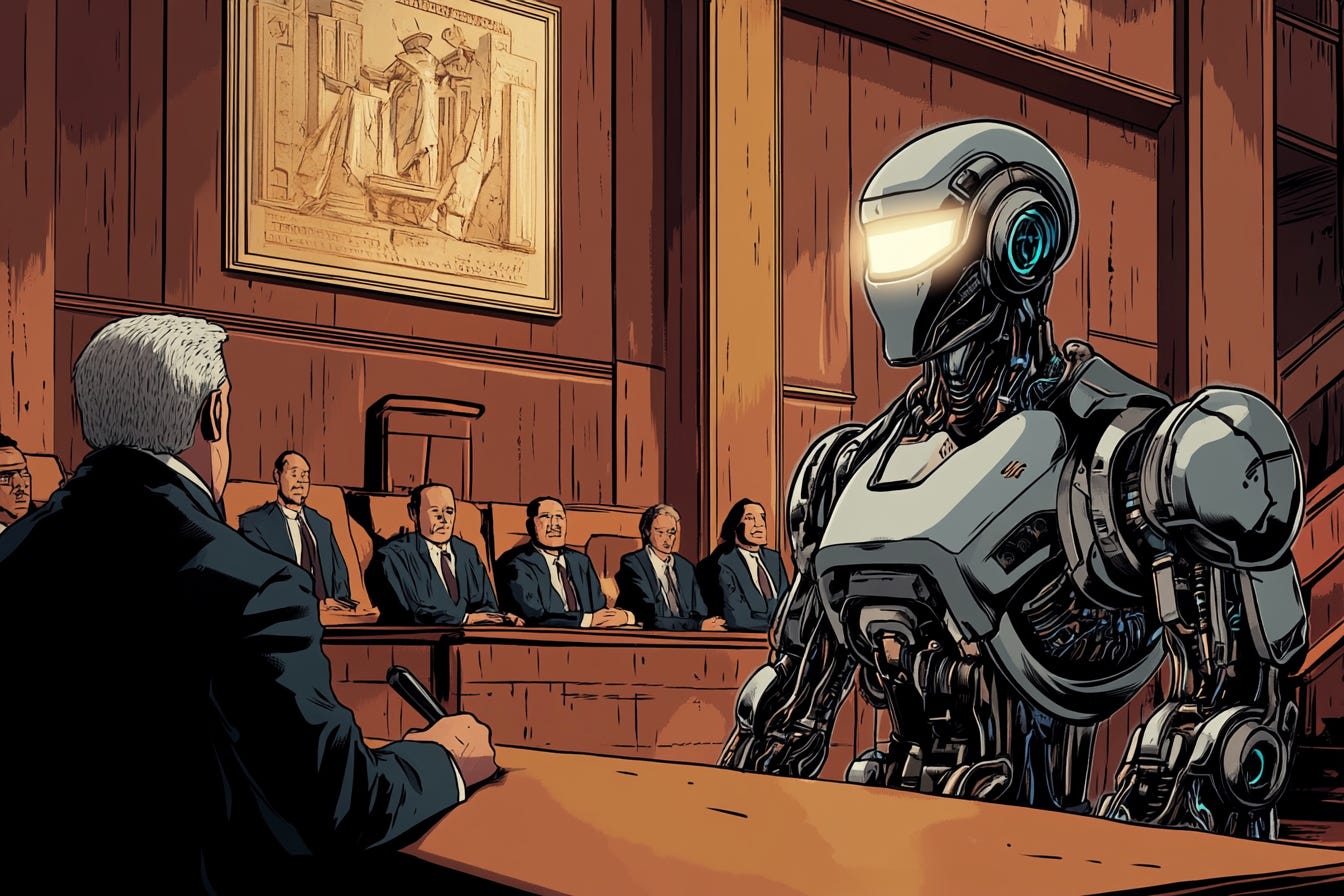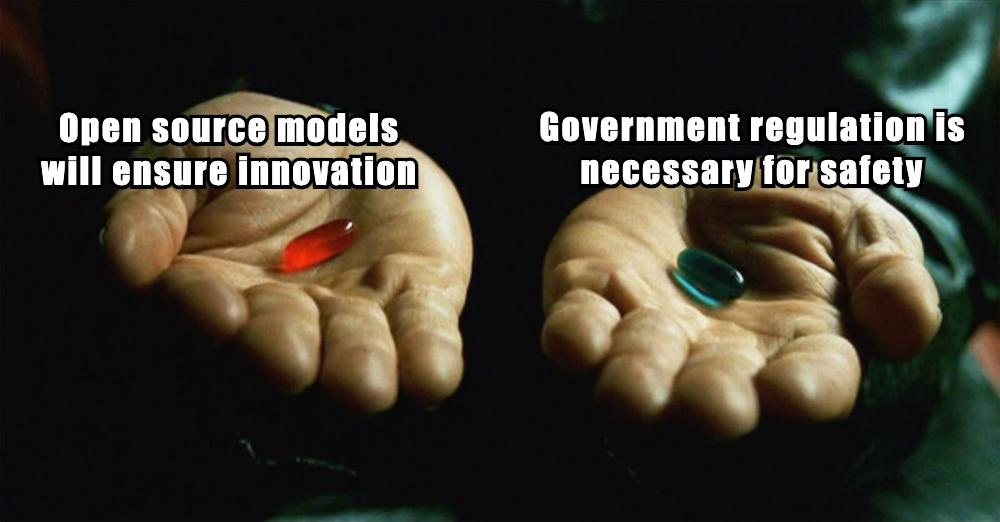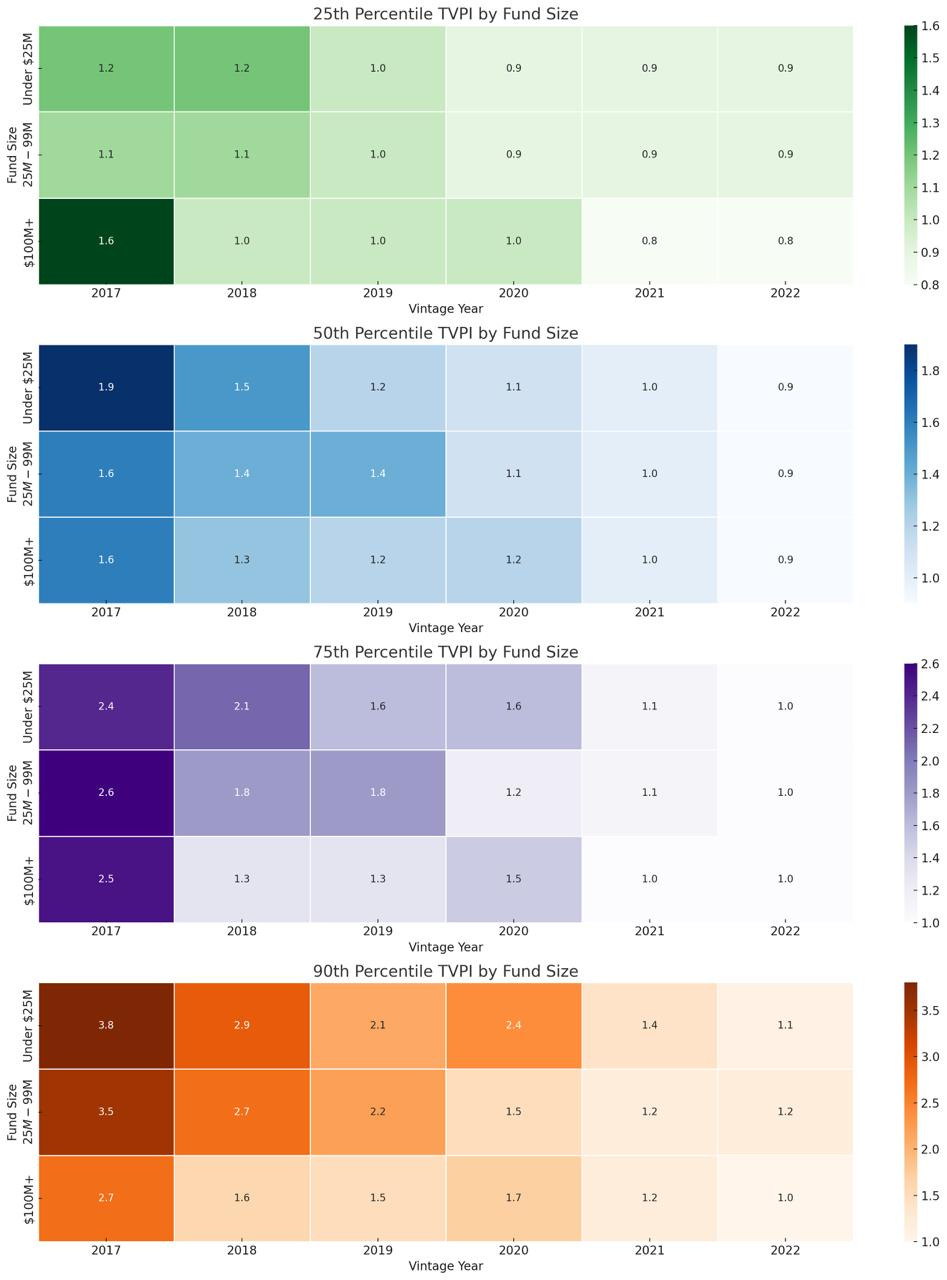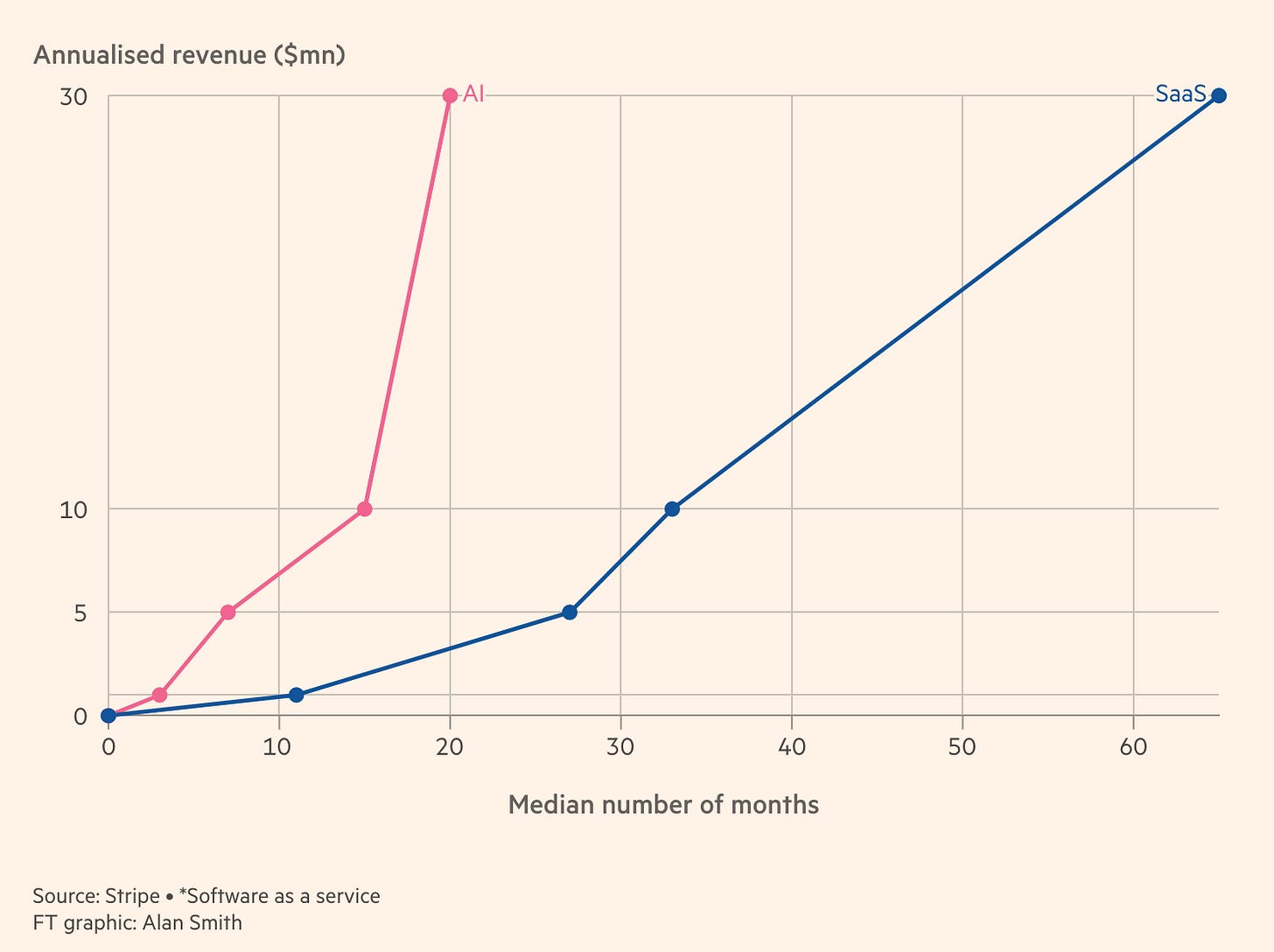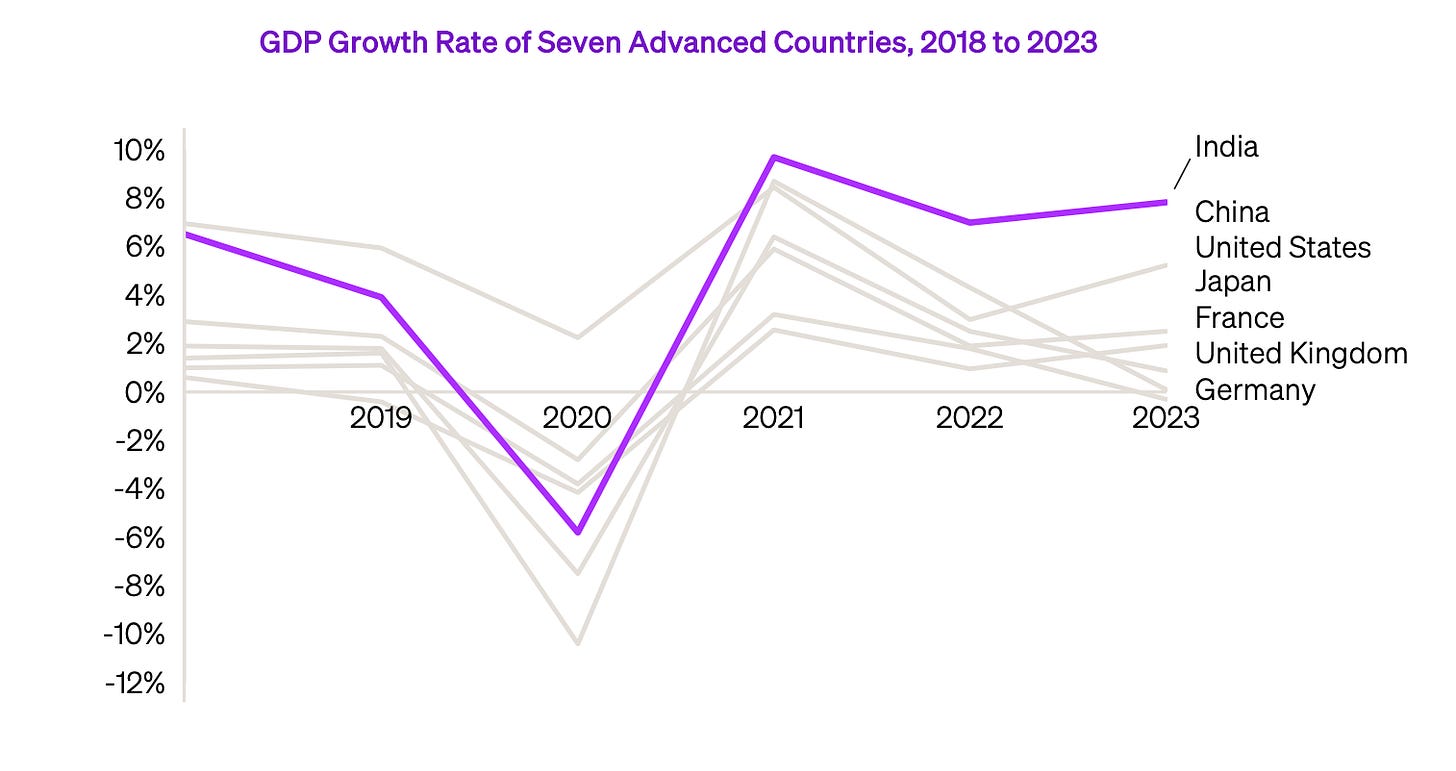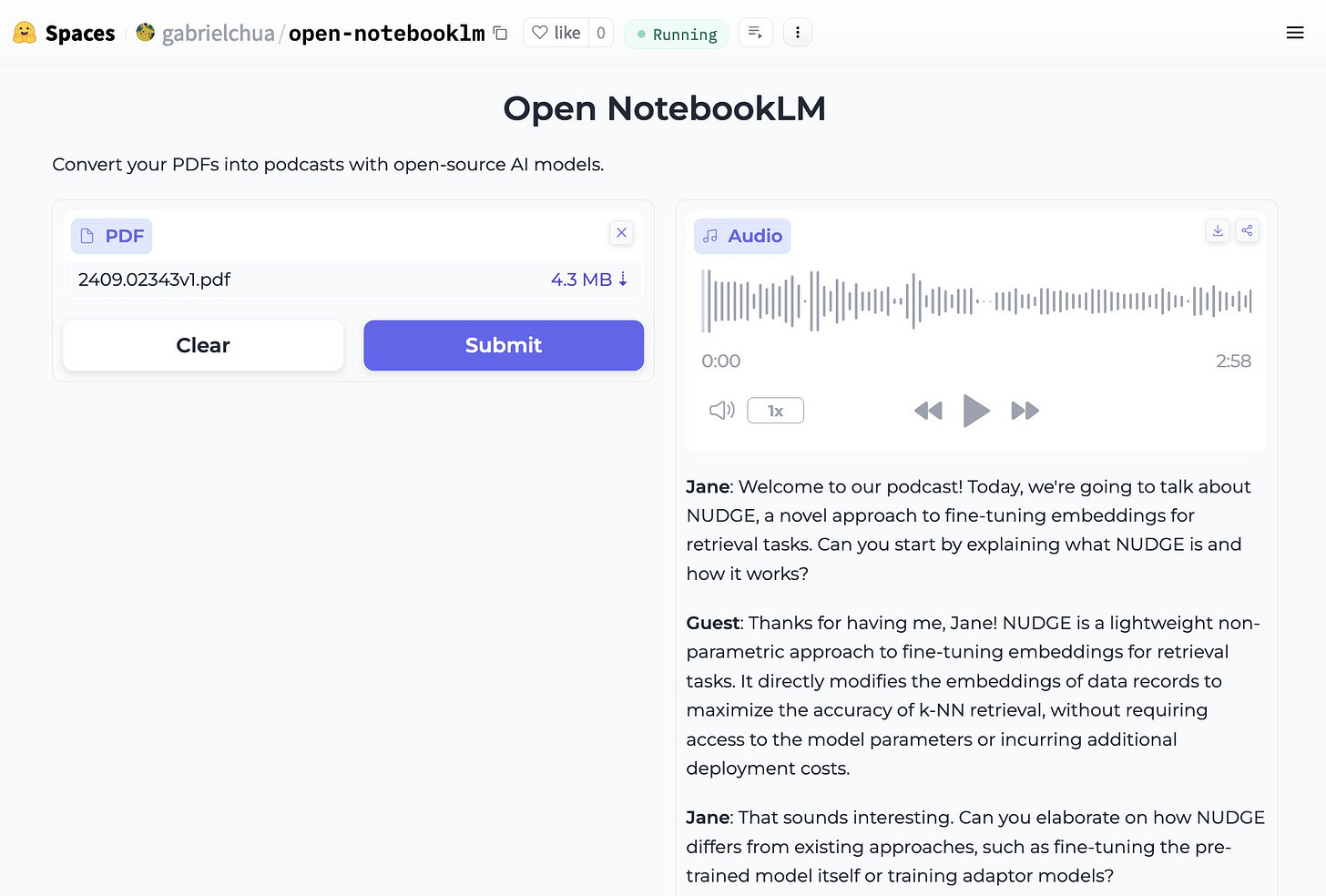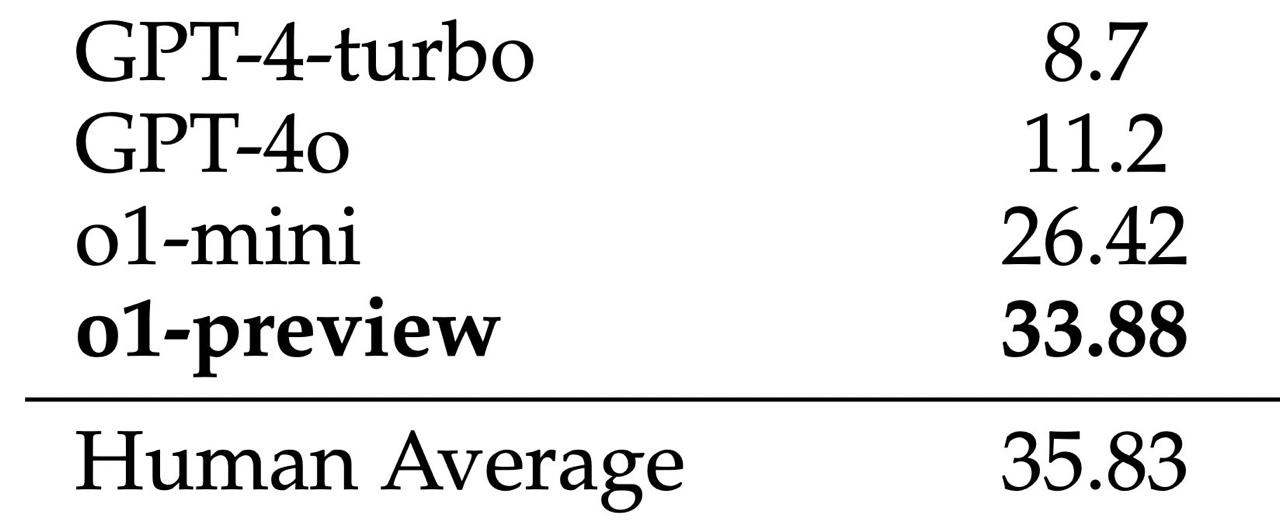code & capital: Tech Titans Clash Over Open Source and Regulation
Weekly newsletter by E1 Ventures
SPOTLIGHT
The AI arena is heating up, and it's not just the servers getting warm. California Governor Gavin Newsom's recent veto of S.B. 1047 - a bill that would have required strict safety checks for advanced AI systems - has only added fuel to the fire. While companies like Meta and Google are relieved, the decision highlights a deeper struggle among the tech industry's most influential figures.
Vinod Khosla, co-founder of Sun Microsystems and head of Khosla Ventures, has been vocal about the dangers of unregulated AI. Comparing unchecked AI development to the Manhattan Project, Khosla warns of risks that could surpass traditional threats. He calls for a balanced approach, stressing the need for "practical safeguards" to reduce dangers while still encouraging innovation.
Reid Hoffman, the LinkedIn co-founder, shares Khosla's worries. He's been engaging with leaders - from President Biden to international policymakers - about the importance of proactive regulation to ensure AI benefits everyone. "We need to understand how AI affects jobs and daily life," he says. Hoffman believes working with governments is key to responsibly navigate the AI revolution.
On the other side, Elon Musk and Marc Andreessen are leading the charge for open-source AI development. Musk, who originally co-founded OpenAI as a nonprofit focused on openness, argues that restricting open-source efforts stifles innovation and could allow rival nations to surpass the U.S. in AI capabilities.
Marc Andreessen dismisses dire predictions as scare tactics used to justify unnecessary regulation. He envisions a future where AI drives unprecedented progress, free from heavy-handed oversight. Andreessen warns that too much regulation could create monopolies, benefiting big tech companies while sidelining startups and open-source contributors.
Investor and thinker Naval Ravikant adds another angle to the debate, criticizing regulatory moves as excessive and harmful. He argues that imposing strict controls on AI development is like "using the government to block free access to mathematics." Ravikant compares supporters of heavy regulation to moralistic zealots who unintentionally hinder progress while claiming to protect society.
These differences aren't just theoretical - they're intensified by personal conflicts. Musk and Khosla have clashed over various topics, from political endorsements to property disputes like access to Martin's Beach. These disagreements underline the complexities and high stakes involved in shaping AI's future.
As these tech titans tussle, the ripple effects could reach your smartphone, your job, maybe even your toaster. The outcome will shape global AI policies, impact international competition, and determine how AI integrates into our daily lives. Will we proceed with cautious regulation to prevent potential pitfalls? Or will we embrace open-source collaboration, fueling rapid innovation at the expense of some control?
The AI community is at a crossroads. E1 Ventures, aligning with open-source proponents, believes that embracing openness is crucial for fostering innovation and ensuring AI benefits a broader spectrum of society. Whether through sensible regulations or by championing open-source principles, the choices made now will have lasting effects.
BEYOND THE NUMBERS: TESTING E/QUANT
The prompt
Create a chart comparing Total Value to Paid-In Capital (TVPI) performance between small and large venture capital funds. Highlight the difference in performance.The answer
Explanation: a common pattern shows that smaller funds often outperform their larger peers. Several reasons explain this phenomenon:
Smaller, newer funds usually focus on the earliest stages of investment. While these early-stage investments come with higher risk, they also present the possibility of significantly larger returns compared to later-stage investments.
Smaller funds manage less capital, meaning a successful investment can have a larger effect on overall fund performance.
Managers of these smaller funds are often earlier in their careers or are former entrepreneurs who’ve transitioned into investing. These individuals are typically more attuned to cutting-edge innovations and better connected with up-and-coming talent, allowing them to spot opportunities early on.
CAUGHT OUR ATTENTION
The U.S. industrial base has declined since the 1990s, leaving the country vulnerable in defense production, with just 1-3 weeks' worth of weapons for a potential conflict with China. This traces back to the 1993 "Last Supper," when defense consolidation reduced 51 contractors to five, decoupling commercial innovation from defense. Palantir’s recent addition to the S&P 500 signals a potential resurgence, as new founders, backed by billions, push to rebuild America's industrial strength and reclaim its global leadership in production.
As CERN celebrates its 70th anniversary, the world's largest nuclear research center faces the challenge of funding a $17 billion Future Circular Collider to replace its aging particle accelerator. Known for discovering the Higgs Boson, CERN now needs to secure support from cash-strapped European member states while also exploring private funding options. Director-General Fabiola Gianotti, nearing the end of her term, has garnered backing from some European states and the U.S., but acknowledges that China poses a significant competitive threat in particle physics. A decision on the new collider is expected in 2027 or 2028, with private-sector involvement still under discussion.
AI start-ups are generating revenue faster than previous tech companies, reaching $30 million in annualized revenue five times quicker than SaaS businesses, according to new data from Stripe. The analysis showed AI start-ups hit $1 million in revenue within 11 months, compared to 15 months for SaaS companies. Despite concerns about the high costs of running AI models, demand for AI services like ChatGPT is strong globally, with 56% of AI company revenue coming from overseas. This rapid monetization highlights AI’s growing market presence and its ability to adapt quickly with innovative products.
DATUM introduces a protocol designed to give miners control over block construction in Bitcoin mining, addressing concerns about centralization in the process. Traditionally, large mining pools have taken over block template creation, leaving miners focused primarily on providing hash power. DATUM allows miners to build their own block templates while still receiving regular payouts, aiming to decentralize the system more effectively than existing solutions like Stratum V2. This approach seeks to reinforce the original decentralized principles of Bitcoin by ensuring that individual miners have a direct role in transaction selection.
In a groundbreaking medical advancement, a 25-year-old woman with type 1 diabetes has become the first person to produce her own insulin after receiving a transplant of reprogrammed stem cells derived from her own body. Conducted by a research team in Beijing, the procedure involved injecting 1.5 million islet clusters into her abdominal muscles, allowing the cells to be monitored and potentially removed if needed. Two and a half months after the transplant, she no longer required insulin supplements, with stable glucose levels for over a year. The study, published in Cell, highlights the potential of stem cell therapy for diabetes, though more trials and long-term monitoring are needed to confirm its broader applicability.
India is now the world’s fifth-largest economy, reflecting decades of rapid growth. With a young, skilled workforce and a booming middle class, the country is poised to become an economic powerhouse. India's leadership in the global IT services market and one of the fastest-growing consumer markets highlights its potential. However, challenges remain - creating enough jobs for its large population, tackling bureaucracy, and simplifying complex regulations are key to unlocking its full strength. While reforms like the Goods and Services Tax (GST) and updates to labor laws are steps in the right direction, more is needed to support business growth and employment. India’s future depends on aligning these factors to fully realize its potential. You can read the full report on Chamath’s Substack.
PORTFOLIO COMPANIES
Crew-9 Astronauts Arrive at ISS as Expedition 72 Welcomes SpaceX Dragon Crew
Trump Talks Starlink Support with Musk for Hurricane Helene Aid
Starlink Will Soon Be Available for Passengers Flying on Air France
Starlink’s High-Speed Internet is Now Available Onboard All Hawaiian Air
“The Big Interview” in Wired with Anduril’s Co-Founder & Chairman
Anduril Secures Contract with Royal Australian Air Force to Demonstrate Drone Defense Capabilities
Anduril Deploys 300 Autonomous Towers for U.S. Border Protection
OpenAI Lets Anyone Use Its New Voice Assistant in Third-Party Apps
THE PRODUCT OF THE WEEK
NotebookLM
NotebookLM is an AI-powered tool developed by Google, designed to transform written content into lifelike, conversational audio. With its text-to-voice feature, the platform converts materials like blog posts or articles into realistic discussions between two AI hosts. Initially introduced as a research tool to help summarize notes, NotebookLM now integrates advanced AI models to support features like topic connections and conversational summaries. While it has raised concerns about the potential impact on the podcast industry, the tool also offers new possibilities for content creation, making podcast production faster and more accessible.
ON A PATH TO AGI
Can Language Models Solve Competitive Programming?
USACO results for o1 models are in!


